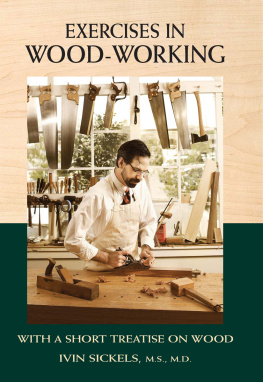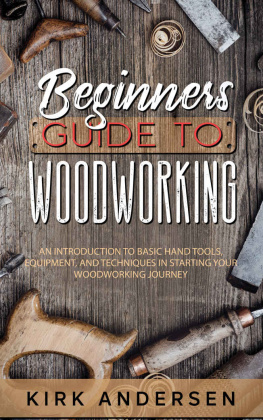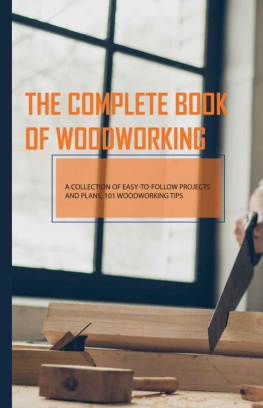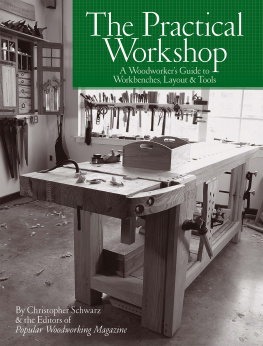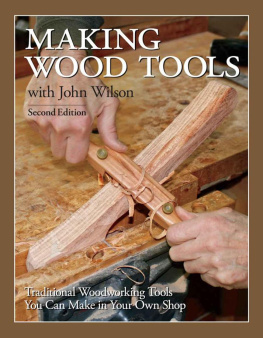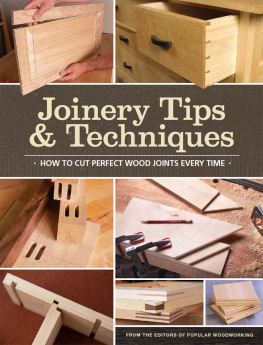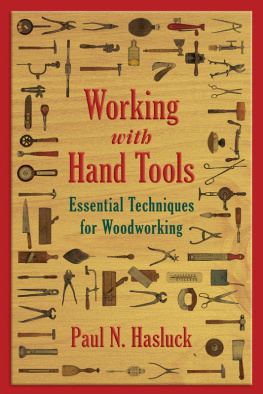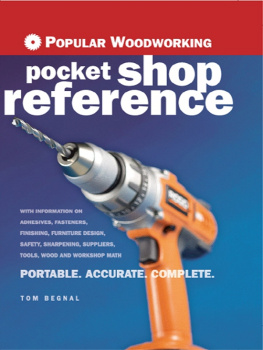PREFACE.
THE exercises in wood-working in this book were prepared by me during the summer of 1883, for the students of the College of the City of New York. Subsequent teaching suggested many changes and additions, until the manuscript was scarcely presentable. This manuscript has been copied for other schools ; and now, in order that those who have recently asked for it may receive it in better shape, this little volume is printed.
I am indebted to Mr. Bashford Dean for the part relating to injurious insects, which was written expressly for this book.
I. S.
INTRODUCTION.
THE tendency of modern systems of education is toward a proper distribution of practical with theoretical training. The mind is to be aided in its development by the action of the eye and hand ; and, in fact, all the special senses are employed in objective teaching and manual exercises. In school, the eye does more than interpret the printed page: it recognizes the form and color of objects, it must calculate their size, proportion, and distance, by observing and comparing them ; the hand is required to do more than writing: it is taught to appreciate the weight, hardness, and other properties of objects, by actual contact with them. At first the introduction of drawing, modeling, and the use of tools, into the courses of study was experimental ; but, having passed beyond that stage, these exercises are now known to be efficient aids to a more natural and rapid as well as stronger mental development.
There are some who, after being educated in the abstract way, can apply their training successfully to practical pursuits, who see no necessity for manual or industrial training in the schools, and who claim that superior and sufficient development may be obtained by the study of mercantile methods and the classics. These, however, form a very small percentage of the people, and systems of education must be arranged to stimulate all intellects, and not measured by the accomplishments of a few. Our best educators recognize this fact, and are modifying old systems by the greater introduction of manual elements. No one doubts the value of practical qualities, not only in ordinary people, but also in prominent leaders, who must be thoroughly practical a fact so aptly illustrated by prosperous manufacturers and merchants, successful engineers, great generals, and eminent statesmen.
Manual training for the early cultivation of these practical qualities in students takes a place in the regular courses of study: by means of it the reasoning power is more easily awakened ; knowledge of objects and the facts connected with them are more readily understood and remembered ; and, above all, the accuracy and precision demanded by the practical studies, lead to closer observation and exactness in others. This training begins in the lowest grades, and continues in its various applications through all the classes, until in the higher grades we find sufficient physical strength to handle the ordinary wood-working tools.
The prime object of all manual training, especially in this country, is to aid mental development, and while this fact must not be lost sight of, the training should be in some useful art, or in some exercises which are introductory to the useful arts.
Perhaps the most valuable of these studies is industrial drawing, which is in itself a sort of universal language, a medium between thought and execution. Its study cultivates precision, and is well calculated to develop sound and accurate ideas. Drawing naturally precedes construction, it prepares the way for the work of the engineer, manufacturer, or builder. Even the ideas of the inventor are jotted down in a chance sketch, which is added to and modified at leisure, leading to the finished sketch, from which the skilled draughtsman produces the designs for the execution of the work.
The studies of drawing and wood-working are closely connected, and may be taught together with great advantage to both. A simple object is roughly sketched on paper, its measurements accurately made and marked on the sketch ; from this a drawing is made with instruments, either full size or to a scale, which is used in the workshop as a guide to the construction of the object. Skill in sketching is a valuable acquirement, and should be taught early in the course of industrial drawing. These sketches should, if possible, be made from real objects, instead of charts, and should always be accompanied by measurements. In sketching it is well, first, to determine the number of diagrams necessary to show the form or structure of the object, and allot for each a certain space on the paper ; second, to place each sketch in the middle of its space, of which it should occupy about one half, thus leaving a margin for notes, measurements, and small details ; third, to draw the relative proportions of the object as accurately as possible ; fourth, to mark on the sketch the measurements of each part.
Wood-working from the simple constructions of earliest times has advanced with the necessities and customs of nations, until at present it includes the complicated structures of modern requirements. Throughout all wood-working trades we find certain general principles regarding the cutting action of tools on wood, and the joining of different pieces ; and, since those principles are more easily taught by carpentry and joinery, these branches have been generally adopted as educational aids.
The very extensive use of wood for building has given rise in this country to a craft of carpenters whose improved tools and methods of work are superior in many respects to those of European workmen. Based upon these methods, workshop practice in schools and colleges as applied to wood-work does not stop with carpentry: its design is to prepare the way for the entire field of mechanical arts ; so that carpentry and joinery are followed by turnery, carving, and possibly a few lessons in pattern-making. These should be followed by metal-work, such as forging, chipping, filing, and, finally, with the elements of machine-work. The study of mechanics as thus taught in the educational workshop should be applied correctly, by methods which are the actual but intelligent practice of the operating mechanic. As to the time required, it can not be expected that the three to five hours per week spent in the workshop are going to make mechanics ; far from it: several years of labor and experience are necessary to produce skilled workmen in any of the arts.

